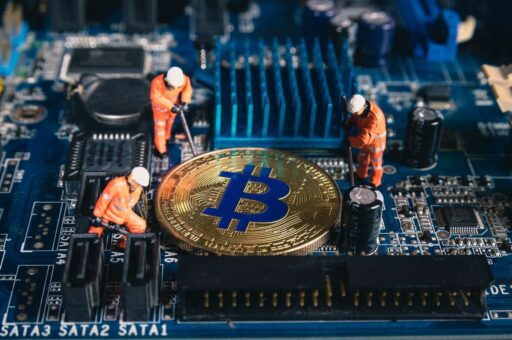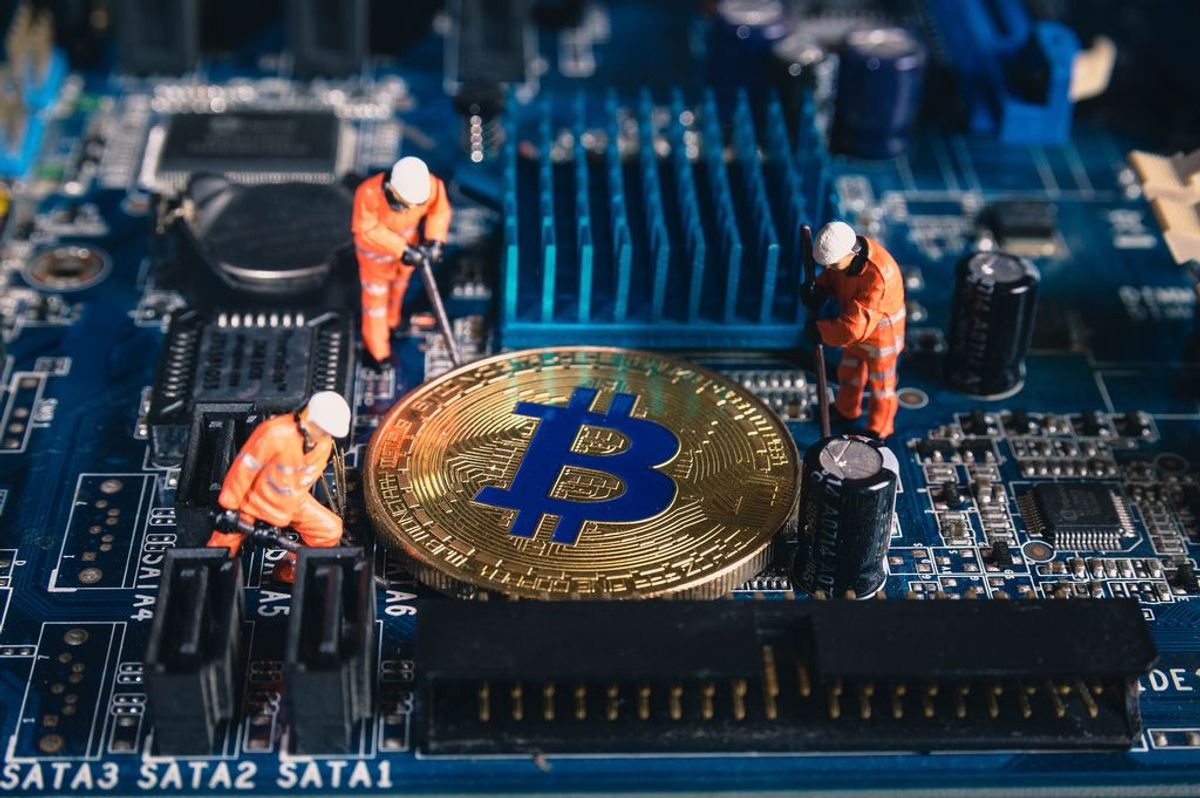Cryptocurrency exchanges are vital to the digital asset market, offering platforms for buying and selling digital currencies. However, as their popularity grows, so does the potential for cybercrime and fraud. It’s essential to understand the importance of crypto exchange ratings and know how to navigate through the myriad of options available. This guide dives deep into the factors that affect exchange ratings, identifies red flags for unsafe exchanges, and provides strategies for protecting your assets, ensuring you make informed decisions in the dynamic world of cryptocurrency trading.
Key Takeaways
- Crypto exchange ratings are crucial for assessing the safety, reliability, and quality of trading platforms in the digital asset market.
- Understanding the key factors influencing exchange ratings, such as security measures, regulatory compliance, and user feedback, can guide informed decision-making.
- Identifying red flags like poor security practices and lack of regulatory compliance is essential to avoid unsafe crypto exchanges.
- Adopting best practices for secure transactions and choosing exchanges with robust security features can protect your digital assets.
- Staying informed about the evolution of crypto exchange services and innovations in technology will help traders select the best platforms for their needs.
Understanding the Importance of Crypto Exchange Ratings

The Role of Crypto Exchanges in the Digital Asset Market
Cryptocurrency exchanges are the linchpins of the digital asset market, providing the essential infrastructure for buying and selling digital currencies. They serve as the gateways for both novice and experienced traders to access the crypto ecosystem.
- Facilitate the conversion between fiat and cryptocurrencies.
- Provide a platform for trading a wide range of digital assets.
- Offer market liquidity, ensuring that orders can be filled at stable prices.
Regular reassessment of rankings is advised to ensure that the crypto exchanges reviewed remain reliable and trustworthy.
When selecting a cryptocurrency exchange, it’s crucial to consider not only the security but also the fees and features offered. This will significantly impact your trading experience and the safety of your investments.
Key Factors Influencing Crypto Exchange Ratings
When evaluating crypto exchanges, certain key factors play a pivotal role in determining their ratings. Security stands as the foremost concern, as exchanges are often targets for cyber-attacks. The strength and effectiveness of an exchange’s security protocols can significantly influence its reputation and user trust.
Another crucial aspect is the user experience, which encompasses the ease of use of the platform, the intuitiveness of the interface, and the quality of customer support. A seamless experience can lead to higher ratings and increased user retention.
Liquidity is also a determining factor; exchanges with higher trading volumes can offer better prices and faster transactions.
Lastly, the regulatory compliance of an exchange assures users of its legitimacy and adherence to legal standards, which is essential in a market that values transparency and accountability.
- Security: Robust protection against cyber threats
- User Experience: Intuitive interface and responsive support
- Liquidity: High trading volume for optimal pricing
- Regulatory Compliance: Adherence to legal and financial regulations
Interpreting Ratings and Reviews for Informed Decisions
When delving into the world of crypto exchanges, interpreting ratings and reviews is crucial for making informed decisions. It’s not just about the star rating; the context behind the ratings and the specifics of user feedback can provide deep insights into the reliability and performance of an exchange.
- Read customer reviews to gauge user satisfaction and common issues.
- Investigate the exchange’s history for any red flags or notable achievements.
- Stay updated with recent news stories that might affect the exchange’s reputation.
Making sense of the plethora of information available requires a discerning eye. Look beyond the numbers to understand the experiences and concerns of other users.
Always consider the source of the review. Sponsored content may not always provide the unbiased perspective you need. Independent reviews, like those from seasoned experts such as Florian Feidenfelder, can offer a more grounded and comprehensive view.
Identifying Red Flags: How to Spot an Unsafe Crypto Exchange

Common Security Pitfalls in Crypto Exchanges
The allure of digital currencies has led to a proliferation of crypto exchanges, each promising a secure platform for trading. However, not all exchanges are created equal, and some harbor significant security risks that can jeopardize users’ assets. Here are some common security pitfalls to be aware of:
- Lack of robust security protocols: Exchanges without strong security measures like SSL encryption, cold storage for funds, or regular security audits are more vulnerable to attacks.
- Insufficient user protection features: Platforms that do not offer two-factor authentication (2FA) or withdrawal whitelists put users at greater risk.
- Poor operational security: Exchanges with a history of security breaches or those that lack transparency about their operational practices can be a red flag.
It is crucial to conduct thorough research and due diligence before entrusting your funds to a crypto exchange. Look for platforms with a strong track record of security and positive user feedback.
Understanding these pitfalls is the first step in protecting your investments. Always prioritize exchanges that demonstrate a commitment to security and have clear, user-friendly policies in place.
Regulatory Compliance and Its Impact on Safety
The intersection of cryptocurrency exchanges and regulatory compliance is a critical area for ensuring the safety of digital assets. Regulatory oversight can significantly reduce the risk of fraud and malpractice, providing a safer environment for investors. Exchanges that adhere to regulations are often perceived as more trustworthy, as they demonstrate a commitment to legal and ethical standards.
- Compliance with regulations such as Know Your Customer (KYC) and Anti-Money Laundering (AML) laws.
- Regular audits and reporting to financial authorities.
- Adherence to security protocols mandated by regulatory bodies.
The importance of regulatory compliance cannot be overstated. It acts as a safeguard against the manipulation and misuse of crypto assets, protecting both the investor and the integrity of the market.
The legal challenges faced by blockchain projects, such as the dramatic legal face-off between TRON’s (TRX) legal team and the SEC, highlight the complexities of operating within a global digital asset market. The outcome of such disputes can have far-reaching implications for the safety and stability of the crypto ecosystem.
User Reviews and Community Feedback as Warning Signals
When venturing into the realm of cryptocurrency exchanges, user reviews and community feedback serve as critical barometers for the safety and reliability of a platform. These insights, often shared on forums, social media, and review sites, can reveal a wealth of information about an exchange’s performance and trustworthiness.
It’s essential to sift through user feedback methodically, looking for patterns of issues or praise that can guide your decision-making process.
For instance, a high frequency of complaints regarding withdrawal difficulties or customer service responsiveness should raise red flags. Conversely, consistent positive remarks about platform stability and support can be reassuring. Here’s a quick checklist to help evaluate community feedback:
- Look for a significant number of reviews to ensure a representative sample.
- Check the dates of reviews to confirm they are recent and relevant.
- Assess the quality of positive feedback; generic praise may be less informative than detailed success stories.
- Be wary of exchanges with an abundance of overly promotional or suspiciously positive reviews, as these could be manufactured.
Remember, while user reviews can be enlightening, they should not be the sole factor in your decision. Always combine this qualitative data with thorough research on security measures, regulatory compliance, and other critical factors.
Maximizing Security: Protecting Your Assets on Crypto Platforms

Best Practices for Secure Crypto Transactions
Ensuring the security of your crypto transactions is paramount in the volatile digital asset market. Always use strong, unique passwords for your exchange accounts and avoid reusing passwords across different platforms. This simple step can significantly reduce the risk of unauthorized access.
When dealing with crypto transactions, it’s crucial to be aware of the security features offered by exchanges. Here’s a quick checklist to follow:
- Enable two-factor authentication (2FA) for an added layer of security.
- Use hardware wallets for storing large amounts of cryptocurrencies.
- Regularly update your software to protect against vulnerabilities.
- Be vigilant about phishing attempts and suspicious links.
The best way to protect your crypto investments is to take a multi-pronged approach. Only keep your cryptocurrency on an exchange if you’re trading it actively to minimize exposure to potential security breaches.
Remember, the responsibility of keeping your digital assets safe does not solely rest on the exchange. As a user, practicing due diligence and staying informed about the latest security measures is essential for safeguarding your investments.
The Importance of Two-Factor Authentication and Encryption
In the realm of digital assets, two-factor authentication (2FA) and encryption are not just additional layers of security; they are essential shields against unauthorized access and potential breaches. 2FA, in particular, is a critical feature that is now commonly enabled across digital platforms, acting as a pivotal security system in the crypto trading sphere.
Encryption, on the other hand, is the silent guardian of your data. It scrambles information into an unreadable format for anyone who doesn’t have the key, making it a formidable barrier against cyber threats. Platforms like BitAI exemplify the integration of state-of-the-art encryption systems, which are fundamental to safeguarding users’ investments.
While no system can guarantee absolute security, combining 2FA and robust encryption standards significantly reduces the risk of asset compromise.
Adopting these security measures is not just about protecting your funds; it’s about ensuring the integrity of your entire trading experience. As the crypto market evolves, so too must the security measures that protect it.
Choosing Exchanges with Robust Security Measures
When venturing into the world of cryptocurrency, the security of your assets should be paramount. Choosing an exchange with robust security measures is essential to safeguard your investments. Exchanges that prioritize security often feature a combination of advanced encryption, two-factor authentication (2FA), and regular security audits.
To ensure you’re selecting a platform that values security, consider the following points:
- The presence of Security Features such as encryption and 2FA
- Commitment to regular security audits and compliance checks
- Clear and transparent security protocols
It’s crucial for beginners and first-time buyers of crypto to select an exchange that not only offers a user-friendly experience but also demonstrates a strong commitment to security.
Remember, the safety of your digital assets is as important as their potential for growth. By choosing an exchange that invests in comprehensive security measures, you’re taking a proactive step towards protecting your investments.
The Evolution of Crypto Exchange Services

From Basic Trading to Advanced Financial Tools
The landscape of cryptocurrency exchanges has undergone a significant transformation, evolving from platforms offering basic trading functionalities to sophisticated hubs equipped with advanced financial tools. Cryptocurrency exchanges have played a crucial role in the evolution of the digital currency landscape in recent years, providing traders with a plethora of strategies and tools that were once the exclusive domain of seasoned professionals.
The democratization of advanced trading tools has leveled the playing field, allowing traders of all levels to engage with complex strategies such as breakout detection, hedging, mean reversion, and arbitrage.
These advancements have not only enhanced the trading experience but also increased the potential for profit and risk management. The table below illustrates some of the advanced tools now available on crypto exchanges:
| Tool | Description |
|---|---|
| Breakout Detection | Identifies significant price movements outside of a predefined range |
| Hedging Strategies | Provides methods to offset potential losses in trading |
| Mean Reversion | Capitalizes on the return of a cryptocurrency’s price to its average |
| Arbitrage Opportunities | Exploits price differences across exchanges |
As the industry continues to innovate, traders are empowered with necessary tools, resources, and assistance for daily crypto trades, reshaping the future of the crypto exchange landscape.
The Rise of Decentralized Exchanges and Their Ratings
Decentralized exchanges (DEXs) have emerged as a pivotal innovation in the crypto landscape, offering an alternative to traditional centralized platforms. DEXs are lauded for their ability to enhance user control and privacy, often eliminating the need for stringent Know Your Customer (KYC) procedures. This shift towards decentralization has not only influenced user preferences but also the criteria for exchange ratings.
As DEXs gain traction, their ratings have begun to incorporate unique metrics that reflect their distinct nature. Factors such as smart contract security, on-chain liquidity, and governance models are now scrutinized. Here’s a brief overview of key aspects considered in DEX ratings:
- Smart Contract Security: The robustness of the code underlying DEX operations.
- On-Chain Liquidity: The availability of assets and ease of executing trades.
- Governance Models: How decisions are made and changes implemented within the DEX.
While centralized exchanges continue to dominate in terms of volume, the rise of DEXs represents a significant shift in the power dynamics of the crypto market, with user empowerment and security taking center stage.
Innovations in Exchange Technology and User Experience
The landscape of cryptocurrency trading is constantly evolving, with exchanges at the forefront of this transformation. Innovative features and user-centric designs are becoming the hallmark of modern platforms, distinguishing them from their predecessors. BYDFi, for example, has emerged as a leader in this space, offering a suite of products that cater to various user needs.
- Exchange
- Buy Crypto
- Leveraged Tokens
- TradingView
- Pay
- Academy
- Live
- Tax
- Gift Card
- Launchpad & Launchpool
- Auto-Invest
- ETH Staking
- NFT
- BNB
- BABT
- Research
- Charity
The integration of these services not only enhances the trading experience but also educates and empowers users, fostering a more inclusive crypto community.
Fezoo is another platform that’s shifting the exchange paradigm by prioritizing user control and privacy. It simplifies the sign-up process by eliminating the need for KYC checks, which appeals to users valuing anonymity. This approach has garnered attention from specific cryptocurrency communities, such as those invested in Ripple and Cardano.
Making the Right Choice: A Comprehensive Guide to Crypto Exchange Selection

Assessing Liquidity and Trading Volume
When selecting a crypto exchange, assessing liquidity and trading volume is crucial. High liquidity indicates that the exchange can handle large trades without major price impacts, reflecting the definition of crypto exchange liquidity. This is essential for traders who need to execute large orders without experiencing slippage, which can lead to unfavorable prices.
Liquidity can be measured by the bid-ask spread, which is the difference between the highest price a buyer is willing to pay and the lowest price a seller is willing to accept. A narrow spread typically signifies a more liquid market. Trading volume, on the other hand, gives an insight into the activity level of an exchange and can be indicative of its reliability and popularity.
It’s important to consider both liquidity and trading volume as they provide a comprehensive view of an exchange’s performance and stability.
Here’s a simplified example of how liquidity data might be presented:
| Currency Pair | Daily Trading Volume | Bid-Ask Spread |
|---|---|---|
| BTC/USD | $500M | $10 |
| ETH/USD | $300M | $12 |
Remember, a well-informed choice hinges on understanding these metrics and how they affect your trading experience.
Evaluating Fee Structures and Hidden Costs
When selecting a crypto exchange, understanding the fee structure is crucial. Fees can vary widely between platforms and can significantly impact your trading costs. Some exchanges offer a tiered fee structure based on trading volume, while others may have a flat fee for all transactions. It’s important to consider not only the trading fees but also deposit and withdrawal fees, which can add up over time.
- Trading Fees: Typically a percentage of the trade value or a flat rate.
- Deposit/Withdrawal Fees: Charges for moving funds in or out of the exchange.
- Inactivity Fees: Some platforms charge for dormant accounts.
Transparency in fee disclosure is essential to avoid surprises. Always review the full fee schedule of an exchange before committing to it.
While some platforms boast low fees, they may compensate by imposing other charges. Always look for any mention of hidden fees in the terms and conditions. These could include fees for services like automated trading or access to premium features. Remember, a low headline rate is not always indicative of the best overall value.
Support and Education Resources for Traders
In the dynamic world of cryptocurrency trading, support and education are pivotal for both novice and seasoned traders. A crypto exchange that prioritizes educational resources demonstrates a commitment to its users’ success. These resources can range from comprehensive trading guides to webinars, and from market analysis to interactive trading courses.
- Online Courses: Platforms like Udemy and Coursera offer paid courses on cryptocurrency trading, ranging from beginner to advanced levels.
- Trading Signals: Services that provide trading signals can also offer educational insights, helping traders understand the market dynamics behind the trades.
- Customer Support: Dedicated customer support can assist with technical issues and trading strategies, enhancing the overall trading experience.
Choosing an exchange with robust educational support not only helps in making informed decisions but also in developing a deeper understanding of the market, which is essential for long-term success.
Conclusion
As we’ve navigated the complex waters of cryptocurrency exchanges, it’s clear that vigilance and knowledge are our best allies. From understanding the pivotal role exchanges play in the digital asset market to recognizing the signs of an unsafe platform, this guide has aimed to equip you with the necessary tools to make informed decisions. Remember, the landscape of crypto exchanges is ever-evolving, with new players and technologies continually emerging. Stay updated, conduct your due diligence, and use reputable sources to keep abreast of the latest developments. Your journey through the crypto seas is unique, and with the insights from this guide, you’re now better prepared to sail them safely and successfully.
Frequently Asked Questions
What are the key factors influencing crypto exchange ratings?
Crypto exchange ratings are influenced by factors such as security measures, regulatory compliance, user experience, liquidity, fee structures, and customer support. Additionally, the performance and reliability of trading platforms, as well as community feedback, play a crucial role in determining ratings.
How can I spot an unsafe crypto exchange?
To spot an unsafe crypto exchange, look for red flags such as a lack of transparency, inadequate security features like two-factor authentication, a history of security breaches, poor user reviews, and non-compliance with regulatory standards.
Why is regulatory compliance important for the safety of a crypto exchange?
Regulatory compliance ensures that a crypto exchange adheres to legal standards and best practices for financial operations, which can protect users from fraud and illegal activities. It also indicates that the exchange is subject to oversight and must maintain certain security and operational standards.
What are the best practices for secure crypto transactions?
Best practices for secure crypto transactions include using strong, unique passwords, enabling two-factor authentication, using hardware wallets for storage, regularly updating software, and only trading on reputable and secure exchanges.
How have crypto exchange services evolved over time?
Crypto exchange services have evolved from basic trading platforms to offering advanced financial tools such as futures, options, staking, and lending services. The rise of decentralized exchanges has also introduced a new model of peer-to-peer trading without the need for intermediaries.
What should I consider when selecting a crypto exchange?
When selecting a crypto exchange, consider factors such as the exchange’s liquidity and trading volume, the comprehensiveness of its fee structure, the quality of customer support, the range of available cryptocurrencies, and the robustness of its security measures.





